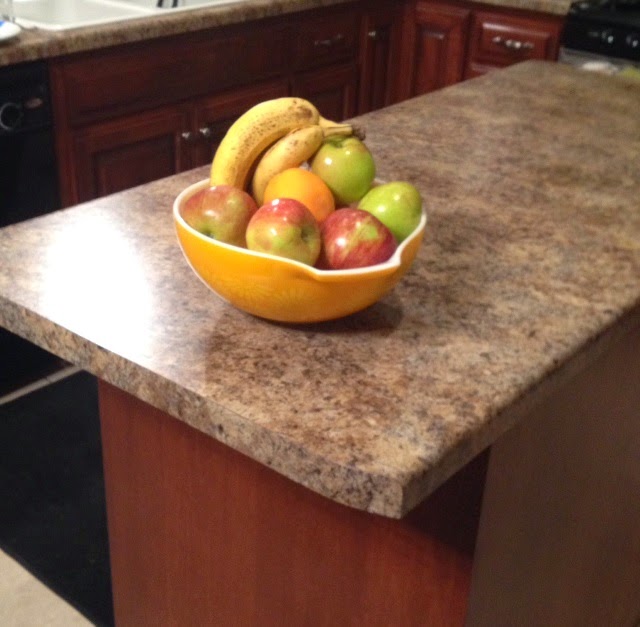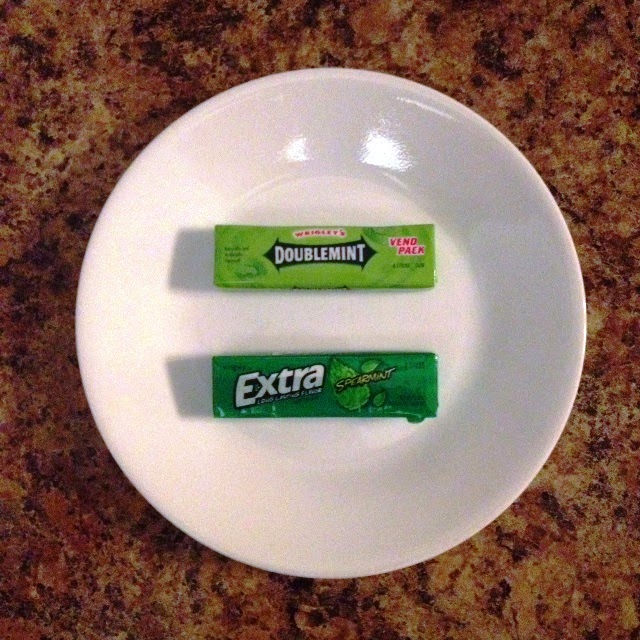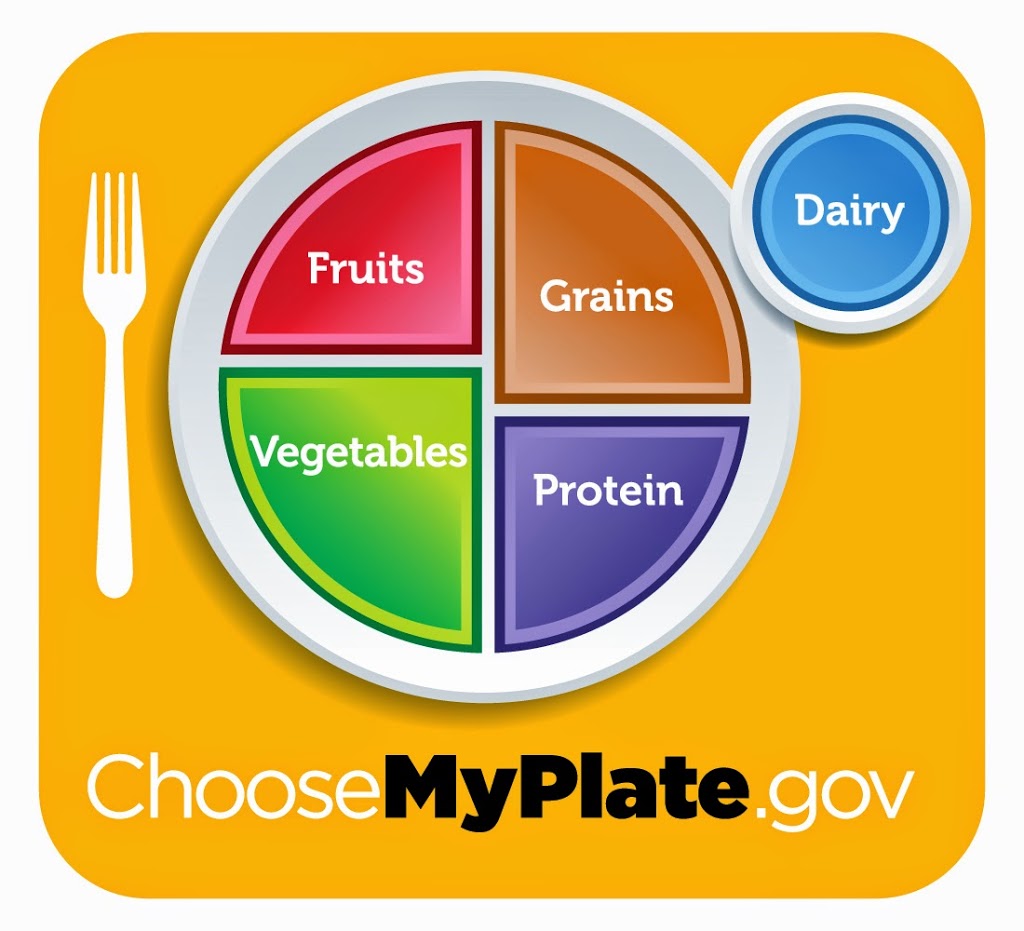Diets
Five Secret Tricks to Regain Control of Your Eating (Part 4)
Welcome back to this series of life-changing tips which are very simple to use!
To recap, we use going to use the “Half Plate Habit” everywhere, chew gum while shopping, and move temptations at the office out of sight.
But many of us eat one or more meals away from home and office. What about when we eat at a restaurant? How can you use the “Half Plate Habit” when you are not in charge of plating your food?
I will offer a few simple actions. Oh, I know, you already know the trick about having the server pack up half the entrée before they even bring it to the table. That will prevent you from eating the entire meal without thinking.
(Do you do that? I don’t. I should, but I don’t.)
And we probably should order all those “heart healthy” foods. You know, those foods with the little heart logo. But do we? Not usually. Sometimes those foods just don’t look appetizing, or the portions seem too small, but for whatever reason, we ignore those options.
So what can we do? I have three simple suggestions.
- One is seating location. Ask for a seat near a window or a well-lit location. When people sit in a booth, in the far corner, dark and isolated, people tend to order more and then eat more. Sitting near a window or on the outdoor patio, generally helps people make healthier choices. When you can be seen, you will usually do what you “should do.”
- The second step is when you order a meal, remember to use the “Half Plate Habit”. Instead of a starchy side dish, ask for extra vegetable or a side salad. And when the server arrives, immediately ask for a glass of water with a lemon or cucumber slice, and ask him or her to not bring the dinner roll basket.
- Lastly, you should try to limit alcohol consumption. Not only is alcohol empty calories, but one of the first effects of alcohol is to put our “decider brain” into a deep sleep. That is why we tend to eat when we drink. But if you are sitting near the window you probably will also not be sitting near the bar, so that decision will be easier.
If you really want to throw caution to the winds, and bypass everything we’ve learned so far, order food while sitting at a dimly lit bar, during double-bubble happy hour, and with 2 televisions going.
But if you really want to do that, we will need to have a one-on-one session.
And just a reminder, if you do not want to wait, you can listen to last week’s podcast, where I list all five suggestions. The show is about 30 minutes long, and you can find it here. You can also subscribe to my podcast in iTunes (for users of Apple products) or Stitcher (non-Apple devices.)
—————–
I want to acknowledge Dr. Brian Wansink and both of his excellent books, “Mindless Eating” and “Slim By Design”. His research and more importantly, his well-written and easy to read books were the source of these suggestions.
Five Secret Tricks to Regain Control of Your Eating (Part 3)
If you just found this blog, I am giving five tricks (they really are not secret) for learning how to gain control over your eating habits.
On Monday, we learned a new method of portion control. It does not require weighing or measuring your food, nor do you need to record what you eat. It is called the “Half Plate Habit.” Yesterday, we went grocery shopping and learned a simple (and tasty) tip for keeping your buying habits under control while at the grocery store or market.
And just a reminder, if you do not want to wait, you can listen to last week’s podcast, where I list all five suggestions. The show is about 30 minutes long, and you can find it here. You can also subscribe to my podcast in iTunes (for users of Apple products) or Stitcher (non-Apple devices.)
—————–
I want to acknowledge Dr. Brian Wansink and both of his excellent books, “Mindless Eating” and “Slim By Design”. His research and more importantly, his well-written and easy to read books were the source of these suggestions.
Five Secret Tricks to Regain Control of Your Eating (Part 2)
Five Secret Tricks to Regain Control of Your Eating (Part 1)
Let’s start with the beginning.
Most people are overweight in the US. Recent studies show more than 60% of people 12 and older are overweight, and about half are clinically obese. It’s not getting better over time, it is getting worse.
But everyone already knows that, or if you don’t know that, I’m not sure where you are living. The US is big.
That was the origin of my blog and podcast. I wanted to help people reach their goals—all goals—including weight management. And my constant refrain is “calorie counting and move more than you used to.”
I still believe that to be the foundation of any successful weight management program. I use LoseIt to easily count my calories and my Fitbit to keep reminding me to walk more.
But, that is not enough. Or rather, maybe that is too much, at least in the beginning. Learning to eat the correct number of calories, and then log them all, and then create a new habit of walking more are three very large goals. They are worthy goals, but it is possible they are too large, too aggressive, and too monumental to talk all at once.
I am working with a weight loss client. Let’s call him “John”. We connect about three times a week with email, video mail and Skype calls. Last weekend we were talking about his strategy, and a phrase came to me. I told him that while his goal is large, we are going to focus on “Simple Small Successes”. Small goals that can build on each other, creating a succession of successful actions. We are going to set John up for success, because each goal has a very simple threshold. Success breeds success. As we move further into his program, the goals will continue to be simple, but eventually they will result in very large changes to his eating and living habits.
I started to think about how I can help more people. I’d love to be able to meet with all of my readers and listeners as I do with John (and it is possible for some) but until I am able to become a fulltime consultant and coach, I will give your advice here.
There are five areas that affect our eating habits, five locations that we can make very small changes to help you make better choices.
You will not need to buy different food, cook differently, or eat at different restaurants. You will not count calories, do special exercises, and go to meetings. In fact, there is only one thing you will need to purchase, and it will cost you only some spare change! But we will get to that in a bit.
But before I give you my ideas, I want to give full credit to Dr. Brian Wansinck. He is the author of two books about the habit of eating. “Mindless Eating” is an excellent discussion of our bad habits while eating. And we all have them. His newest book, “Slim By Design” takes his first book and adds many actions that will help the reader change their life. So to be clear, none of these ideas are mine. I am using his ideas. My words. His ideas.
We encounter food in four general places: home, the grocery store, the work place and restaurants. I am going to give you specific steps for each of those places. Remember, I am focusing on Simple Small Successes and each one of these ideas are free, simple and effective.
What are they?
Let’s start with the first idea, which can and should be used anywhere. Let’s consider the plate you use to eat.
The USDA has a complicated definition of how much of eat type of food to eat. And if you want to follow that, you will eat very healthy. But it is not simple, and remember this is all about “Small Simple Successes”.
So instead of the USDA plate with its four categories, I suggest an easier approach. It is simply eating with a “Half Plate Habit.” Take your plate—any plate—and visually divide it in half. That is easy enough, right?
Then—here comes the easiest part—when you eat, fill one half with fruits, vegetables and green leafy salads. Tuna pasta salad and potato salad do not count here. But all the steamed, roasted, grilled and raw veggies you like, your favorite fruits, and a nice salad with fresh greens, that will be how you fill half your plate.
The other half? Anything you want.
Seriously.
Anything you want, but with two rules: the food cannot extend over the edge, and you cannot pile food on top of other food. But otherwise, pizza, spaghetti, macaroni and cheese, BBQ ribs, quinoa salad can all go on this half. This is where the tuna pasta salad and potato salad will go, along with the onion rings, French fries, and brownies.
Wait a minute! Do I really think this will help you gain control over eating? It sounds like I am suggesting that pigging out is the answer to being overweight.
Yes. It will help. Think about it. First off, you only have half a plate to fill with the “pig out” food, and I limit it to not extending over the edges, and not piled high. So the reality is you will not get a lot on that plate. But the other half is full of the really good food, the healthy food. The fruits have sugars, which will satisfy your sweet tooth (and we all have one) while the veggies and their fiber help fill our stomach with bulk but not many calories.
But the real magic happens when you decide you want that extra piece of pizza. When you get up to go get it, you then remember that you will also need to eat a half plate of fruit and veggies, too. Many times, you will decide that maybe you really do not want that pizza that badly, and you will stop eating, and very likely eat much less than you normally would have eaten.
What happens if you cheat and take the pizza but not the fruit and veggies? Well, yes it is cheating, but the only person who loses is you. This “Half Plate Habit” will only work if you really want it to work. It will be the most difficult of my five suggestions, but it is the most important, because you will be able to use this everywhere: at home, at a family gathering, at an all you can eat buffet, and at work.
This one habit will be the first habit to propel you to success.
That is my first “secret” trick to gain control over your eating habits. This trick can be–should be–used everywhere you eat.
Tomorrow we will go to a specific place of food, and give you a simple and extremelt inexpensive trick to help you maintain control.
If you do not want to wait for the next blog post to reveal and explain the next tip for control, you can listen to my podcast http://makeyoursomedaytoday.com/5Tricks and hear all of them.
Do You Want to Eat Healthier, Gain Control and Maybe Even Lose Weight?
This bowl of fruit will help you eat healthier by making better choices. It will help you gain control over your eating habits and your life. And it will help you better manage your weight. It may help you lose weight.
It may help increase your happiness.
It sounds like it is magic, bit its not. But it is a sneaky trick. Our brains our powerful and sometimes work against our best interests.
Next week, I will post a 5 part series here, beginning on Monday, October 27, 2014, giving you secret “tricks” that you can do anywhere: at home, the office, in a restaurant, in the grocery store.
These tricks are simple. And effective when used. And they cost almost nothing. Well, one trick will cost you about 50 cents a month. Maybe less.
But take note. With these five small changes, you will not be asked to:
- Buy different food
- Cook differently
- Eat at strange restaurant
- Stop eating at restaurants
- Count calories (Yes. That’s right I said “NOT count calories!!!!”)
- Weight and measure your food
- Perform exhausting exercises
- Attend meetings
- Buy special “fat burning, metabolism-revving, appetite suppressing” pills
What’s Old is Not Necessarily Obsolete (Part 2)
In the early 1900s a scientist (Wilber Atwater) discovered that burning a food will release energy. This energy is measured in units called–surprise!–calories. (I am not going to get too deep into this, and the fact that a scientific calorie is not the calorie that we count. We are actually counting kilocalories, or kCal. Whenever I refer to calories, I mean the calories that we count in food, the stuff on the food labels.)
But this is when food began to turn from the idea of pure sustenance into sources of energy. And further research showed that carbohydrates–all of them–release 4 calories per gram. Proteins also contain the same amount of energy, 4 calories per gram. Fats are huge energy stores, with 9 calories per gram. Alcohol is almost as energetic as fat, with 7 calories per gram. (This gives another reason why excessive alcohol consumption have be problematic.)
This is the basis of calorie counting.
I think back to my childhood in the late 1960s. I can remember watching my parents sit at the kitchen table after dinner with their notebook and a reference book, listing everything they ate and adding up the calories. This was about the same time that Weight Watchers began to grow. In the 1970s, other services arrived, such as Nutrisystem, followed by Jenny Craig in the mid-80s. Both were based on buying pre-packaged foods. In personal experience, Nutrisystem’s food was processed, prepared, controlled….and very small. I remember dropping in small bags of rice to rehydrate it before eating and the bags were small. They offered cans of meat pate (okay, it was really paste) the size of a small can of cat food. The size of the can was not the only comparison to cat food (although, to be fair, the BBQ beef version wasn’t bad tasting.)
Those companies continue and others have grown, all offering various levels of pre-packaged food. And they will work. Seriously! If you follow their plan, carefully, you will lose weight. It is expensive, and not exactly eating “clean”, but it will be effective.
It will be effective because it carefully limits your calories. It is calorie counting, but you pay someone else to do the counting for you.
What about other methods that are not calorie counting? Things like hCG? Medifast? Slim-fast? I remember in the early 80s wanting to lose weight with Dexadrine (before it became the relatively harmless Dexatrim). The pills made me jittery, and if I had followed the “included diet plan” I would have lost weight, because it was a 1200 calorie a day menu plan.They all revolve around one thing: a tightly control caloric intake, with other substances to “enhance” the method.
But guess what? You are still calorie counting.
How about prescription medications? Phen-fen was an appetite suppressant–with some pesky cardiovascular side effects for some people–but it only worked when I ate less. Xenical–later to become the over-the-counter medication Alli–helped block fat absorption. With that medication, you still needed to be careful of your dietary consumption (eat very low fat diet) which simultaneously reduced the gastroinstestinal side effects and reduced your caloric intake.
If you want to change your weight, you have many options, but they all involve eating less and moving more. I just believe that my method, using LoseIt, is very effective. Is it the best? I don’t know. I haven’t tried all of the different methods available. But honestly, I don’t need to keep trying. I already reached my goal using LoseIt’s approach to simple calorie counting and the LoseIt approach has me maintaining my loss for 19+ months. LoseIt is a new company, built on a century-old concept. It–and many other plans–can work, but only if you are careful, persistent, and focused. (And wow–focus was very difficult while taking Dexadrine.)
Next up tomorrow: Another good recipe! (I’m just not sure which one yet.)










